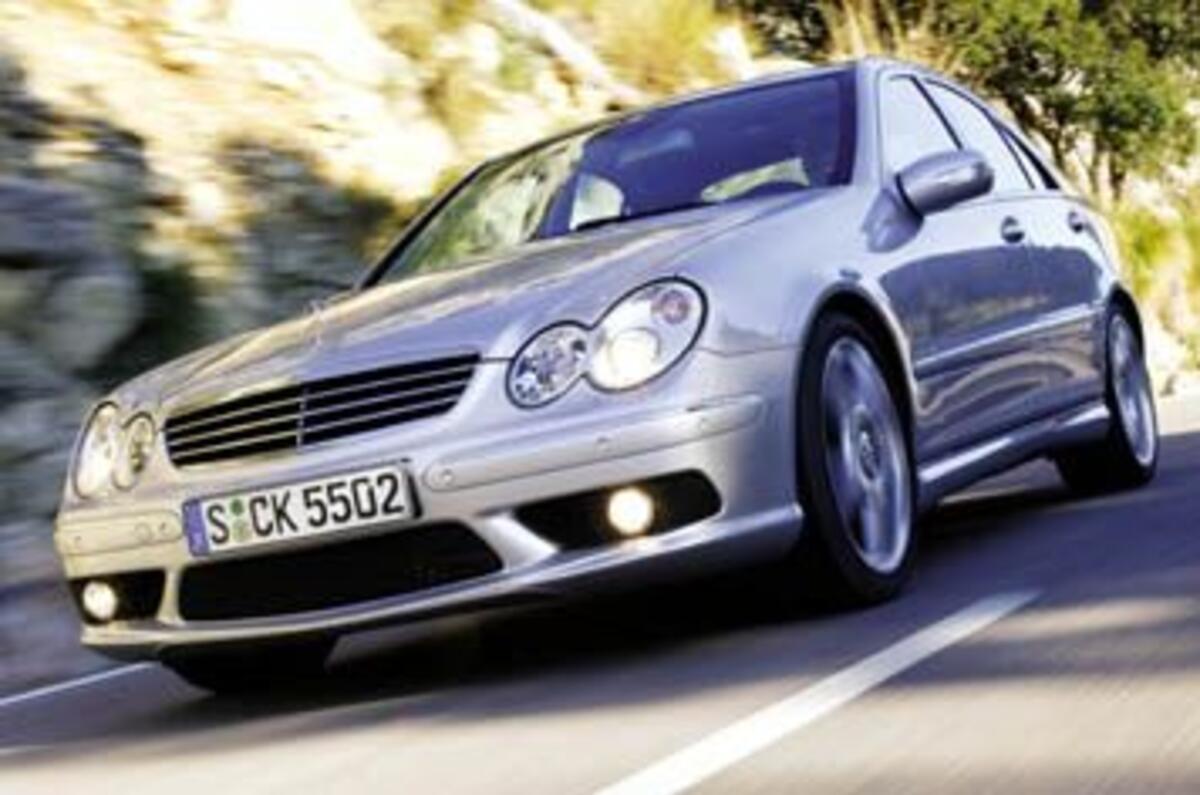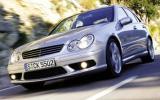Is it a not-so-subtle reminder, or just plain embarrassment? We suspect a little of both. How many other cars define the engine’s configuration on the rev counter? The new C55 does, via a small V8 label.
The C55 signifies a return to AMG’s V8 roots, after barely a three-year flirtation with a supercharged V6. AMG found 8100 homes for the C32, but the AMG engineers seem much happier now that there’s a serious, big-capacity, naturally aspirated 5.4-litre V8 powering the meatiest C-Class. And the badge is there to, well, to ensure the owners don’t forget.
As if they could. It’s not the performance – AMG claims 5.2sec to 62mph for both C55 and C32 – or even the transformation to a deep, wonderfully muscular exhaust note, but the makeover in the dynamics that stands their new sports saloon apart. The C55 marks a small, but perceptible, shift towards a sharper, more sporting focus, that sets it closer to the M3 than any previous AMG hotrod C-Class.
The C55 looks beyond the long-established AMG rules that defined its antecedents, by adding a degree of handling finesse that will surprise enthusiasts who see any AMG 55 model (and there are plenty) as mere exercises in point-and-squirt driving.
In swapping 349bhp V6 for 362bhp V8 (from the CLK 55 AMG) to coincide with the C-Class’s mid-life facelift, the AMG engineers saw an opportunity to maximise the benefits of the chassis modifications planned for the regular C. Most obviously, the steering is seven per cent quicker. Doesn’t sound much, but with just 2.7 turns it’s more accurate and precise, especially around the on-centre position, as well as requiring noticeably smaller wheel movements. Very un-Mercedes- Benz.
The impression of greater agility begins here and is well supported by a 14mm-wider front track, 20 per cent firmer springs and dampers, and subtle revisions to the suspension’s kinematics.
AMG has also rethought it’s philosophy on how the (standard and still five-speed) automatic gearbox functions. A new manual mode – in addition to sport and comfort modes – means just that. No kickdown and, more important, no changing up at the engine cut-out. What a difference this makes to the driver’s feeling of being coupled with the car and being ready for action when the right road opens up to issue the challenge.
As a result, the C55 feels much better sorted than the C32, and the driver more connected. It’s an altogether more satisfying and natural performance car, the handling always flaunts its greater fluency and near neutrality, so the C32’s understeer is a thing of the past.
Exceptional body control helps, as does knowing that the gearbox isn’t about to jump up a ratio just when the car’s leaning hard on the outside rubber through a favourite apex. I’m not saying the C55 is going to knock the M3 from its perch as the performance benchmark – even if you could forget the Beemer’s near eight-grand price advantage – but it’s much closer, and far more rewarding than Audi’s (also V8) S4.
Yes, the ride is firmer, softer suspension bushes not quite compensating for the tauter chassis tuning, but it’s only really sharp ridges that catch out the stiff sidewalls of the new 18in rubber. Predictably, the brakes are massively strong, but the pedal’s too high above the accelerator.















Add your comment